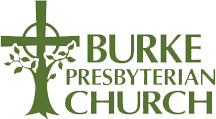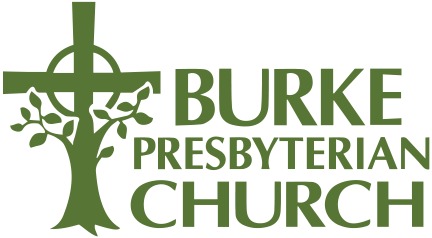Matthew 21:1-11
21 When they had come near Jerusalem and had reached Bethphage, at the Mount of Olives, Jesus sent two disciples, 2 saying to them, “Go into the village ahead of you, and immediately you will find a donkey tied and a colt with her; untie them and bring them to me. 3 If anyone says anything to you, just say this, ‘The Lord needs them.’ And he will send them immediately.” 4 This took place to fulfill what had been spoken through the prophet:
5 “Tell the daughter of Zion,
Look, your king is coming to you,
humble and mounted on a donkey,
and on a colt, the foal of a donkey.”
6 The disciples went and did as Jesus had directed them; 7 they brought the donkey and the colt and put their cloaks on them, and he sat on them. 8 A very large crowd spread their cloaks on the road, and others cut branches from the trees and spread them on the road. 9 The crowds that went ahead of him and that followed were shouting,
“Hosanna to the Son of David!
Blessed is the one who comes in the name of the Lord!
Hosanna in the highest heaven!”
10 When he entered Jerusalem, the whole city was in turmoil, asking, “Who is this?” 11 The crowds were saying, “This is the prophet Jesus from Nazareth in Galilee.”
Lord, uphold me that I might uplift thee. Amen.
I love a good parade. When he was a toddler, I took Davis to the St. Patrick’s Day Parade in Old Town Alexandria. Even though we are not Irish, we were swept up in the music, the marching bands, the police motorcycles driving slowly, the bagpipers, people waving from convertibles. There were even Star Wars Storm Troopers, marching in kilts. What’s not to love about Stormtroopers in kilts? I started to wonder if perhaps the Empire was undergoing some kind of Protestant Reformation.
But, such is the power of a parade. It puts ideas in our heads.
Jesus’ triumphal entry into Jerusalem was a vivid parade, and it appears in all four Gospels. He entered, riding on a donkey. This was no accident. It was a traditional sign of peace. But for Jesus it was even more than that. It harkened back to the words of Zechariah, See, your king comes to you, righteous and victorious, lowly and riding on a donkey, on a colt, the foal of a donkey. He was surrounded by a few hundred peasants throwing their coats and tree branches in front of him.
Now here’s something you may not know: Biblical scholars John Dominic Crossan and Marcus Borg say that there were actually two parades that took place on that original Palm Sunday in Jerusalem.[1] From the West, the Triumphal Entry of Jesus. From the East, a second parade, that could have been called the Triumphal Entry of Pontius Pilate. His was a show of force from the Roman government, perhaps necessary during the celebration of Passover when the Jewish population of Jerusalem would double or triple. This was the kind of parade that said, “Don’t get any ideas, if you know what’s good for you.”
In the movie The Hunger Games, Donald Sutherlin plays the brutal President of the capital city. In one scene I’ll never forget, he trims the stem of a rose, while posing a rhetorical question to the host of the deadly games: “Seneca, why do we have a winner? Why not round up 24 people from the districts and execute them all at once. That would be quicker.” He answers his own question. “Hope. It is the only thing stronger than fear. A little hope is effective. A lot of hope is dangerous. A spark is fine, as long as it is contained.” He snips the leaves of the rose clean off.
Imagine what a contrast that first Palm Sunday must have been. The warhorses and foot soldiers pounding the stones of the Roman Highway System from the East. The donkey crunching over palm branches and the cloaks of peasants, flanked by singing children from the West.
Tanks rolling through the streets, armed personnel with visors down in riot gear, guarding Pilate behind bullet proof glass, from the East. And the parade, with Jesus weeping, from the West.
Jesus knew that even those who were singing and taking selfies with their Palms that day would soon turn on him. He wept out of love for them. He did not stop them or shame them. That’s always struck me. He had compassion for them even in their fleeting praise.
The parade from the East was about domination and the shine of human glory. It was anxiety and control and the burn in your stomach that tells you things are not well.
The parade from the West was vulnerability and quiet obedience and the hum eternal glory, a hum rising from life itself, from even beyond life itself, a joyful lampoon of the other kind of power. In Luke’s telling of this story, Jesus says that if the people had not been shouting, even the stones would have cried out!
Two parades rumbled through Jerusalem that day. The Prince of Peace from one direction and the pretender to the throne from the other.
Which parade will we join? Our rib cages swell with that question. Which leader do we hail to? Which one plants ideas in our heads about the direction of this world? Are we throwing our time and our money toward the army of anxiety? Or will we risk being coatless and joyful to give this messiah a chance with our lives?
Which parade looks to us like a big farce headed for more suffering and weaponized alienation from God and each other, and which one looks to us like the holy path, rocky and tear-stained and covered by broken branches and even our broken promises that nevertheless leads to salvation?
I suspect that after this week’s tragedy at the Presbyterian School in Nashville, and the gathering storm of aggression we feel rumbling under the other headlines, we feel that question over and over again. I’ll tell you, the hardest sermon I give in a week like this one is not the one in the pulpit but the one at the dinner table or from the front seat or to a kid at bedtime, or the sermon to my own heart when sleep won’t come. And that is when I remember that Jesus didn’t count on our processionals or our professionals to save us. Jesus was kicking off a week of turning the tables on the whole broken system, telling his disciples from the crumbs, “This is my body, broken for you,” and eventually confronting Pilate alone.
Before I get too spun up about which parade I might choose in any given moment, I have to remember that it was a Roman centurion, probably someone from the other parade, who would be one of the first to mutter out a faith statement, “Truly this man was God’s son.” It turns out that there is no armor quite thick enough to keep the grace of Christ from getting to us.
That is the great scandal of the Gospel. Every one of us begins Holy Week with an invitation to be changed, an invitation to be set free from adject submission to the powers and principalities of this world, whether they wield a cross or an assault rifle or cancer or perfectionism or comparison or simply the words that wound your soul and make you feel 2 inches tall. Every one of us is invited to step into life governed only by the untamable love of God.
And to practice that, today, we will form yet a third parade. One that involves shuffling forward to this table, trying to get a napkin without them all falling on the ground, hungry to be loved even if we are falling apart. This is the parade where we break bread with broken people given by a God who does not break promises. This is how we take unearned grace into our bodies and into the world. The parade from creaky church chair to ordinary communion table to the taste of forgiveness on our lips – this is where we lampoon the power of death and join the saints who went before us in the parade of everlasting life. This is where the grace of Christ metabolizes into courage in our actions and resurrection hope for our world.
May it be so.
[1] Marcus J. Borg & John Dominic Crossan. The Last Week: A Day by Day Account of Jesus’s Final Week in Jerusalem. San Francisco: HarperCollins, 2006.

